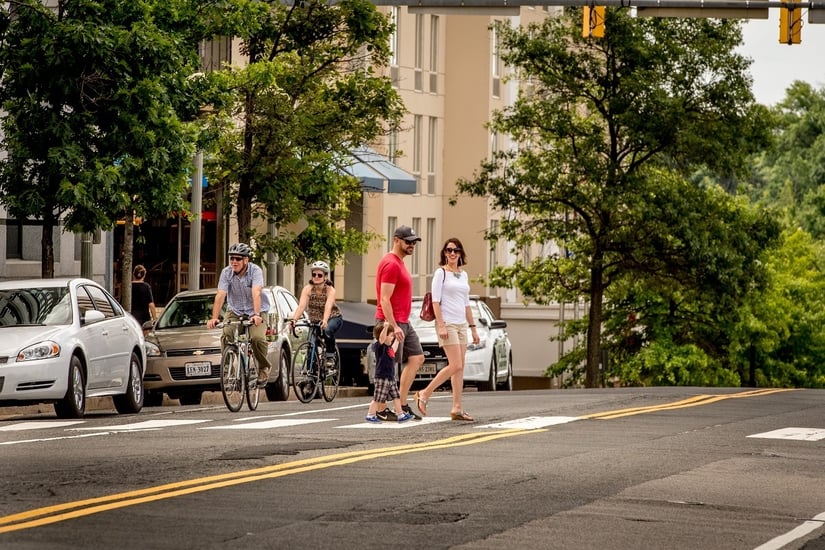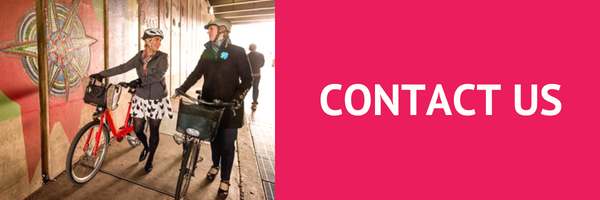If you’re like me, you think about what you want to accomplish at the start of every year. Some of the most common resolutions revolve around losing weight and getting fit, saving money, spending quality time with family, and enjoying life a little more than you did the previous year. Whatever your goal may be, the key to success may be as simple as switching up your commute.
I know this may sound a little wacky. How are you supposed to get exercise, save up, and fit in time with family while you’re driving to work? Well, the answer is that you wouldn’t be driving. Let’s just break this down a little further.

If Your Goal Is to Work on Your Fitness
Switching from driving to taking public transit can have big health benefits. Transit users spend an average of 19 minutes walking every day, compared to six minutes per day for those that drive themselves to and from the office. Additionally, people who switch from driving to walking or biking one-way for 30+ minutes as part of their commute lose 15 or more pounds on average over a two-year period.
In the new year, why not try walking, running, or biking to the train rather than driving? This little bit of exercise could put you on the fast-track to meet your goals, and you can avoid the long lines at the gym. It may surprise you just how little time it takes and help you wake up for the day ahead.
If Your Goal Is to Save Money
Changing your commute is an easy way to help you cut back so you have a little more to contribute to paying off loans or saving for a holiday getaway. The American Public Transportation Association estimates that the average savings for a person who opts for public transit instead of driving is $9,234 annually. What would you do with an extra $9,000? You can also use the transit benefit to save up to 38% on your commute.
If you’re already ridesharing or taking transit, but drive to get to it, you may still be leaving money on the table. AAA estimates that driving costs about $0.57/mile, meaning that if you have a 2.5-mile commute to your stop, walking or running can save you $2.85 per day, or $718 per year (not including what you’d have spent on parking). With biking, you can get to your station or stop quickly and benefit from big savings when compared with driving, which can be easily calculated using this tool.
If Your Goal Is to Spend More Time with Family
Picture this—you’ve just finished up a long day at the office and you hop in your car to head home. You get onto the interstate and are greeted with a sign that says “9 miles, 50 minutes.” You call your spouse and tell them to go ahead and eat dinner without you. Does this sound a little too familiar?
The nice thing about public transit is that it runs on a set schedule and there are plenty of apps available to give you real-time data on how your commute will look at any time. If taking the VRE/MARC train doesn’t work for you, you can also do things like join a carpool or vanpool to take advantage of the HOV lanes, which can cut 30 minutes off your commute.
If Your Goal Is to Enjoy Life a Little More
When you’re stuck in traffic on your commute, your blood sugar rises, you have higher cholesterol, your risk of depression and anxiety increases, your blood pressure spikes, and your happiness declines. When you finally get home to spend that much-desired time with family and friends, you may be tired, frustrated, and stressed. Simply put, you are not enjoying life very much.
Whether you’re taking transit, ridesharing, walking, or biking, you’re able to step away from the stress-inducing gridlock and spend more time on things you enjoy. For me, making a run part of my commute helps me fit in time for something I love. If that doesn’t work for you, our team has put together some other examples of things to do that will help you get back to your hobbies or save you some time, so you can do whatever helps you enjoy life.
Interested in starting the new year with a new commute? Contact us and we’ll help plan one specific to your needs.
Editor's Note: This blog was first published in December 2016 and has been republished with updated information and links.
Photo Credit: Sam Kittner/Kittner.com for Arlington Transportation Partners


